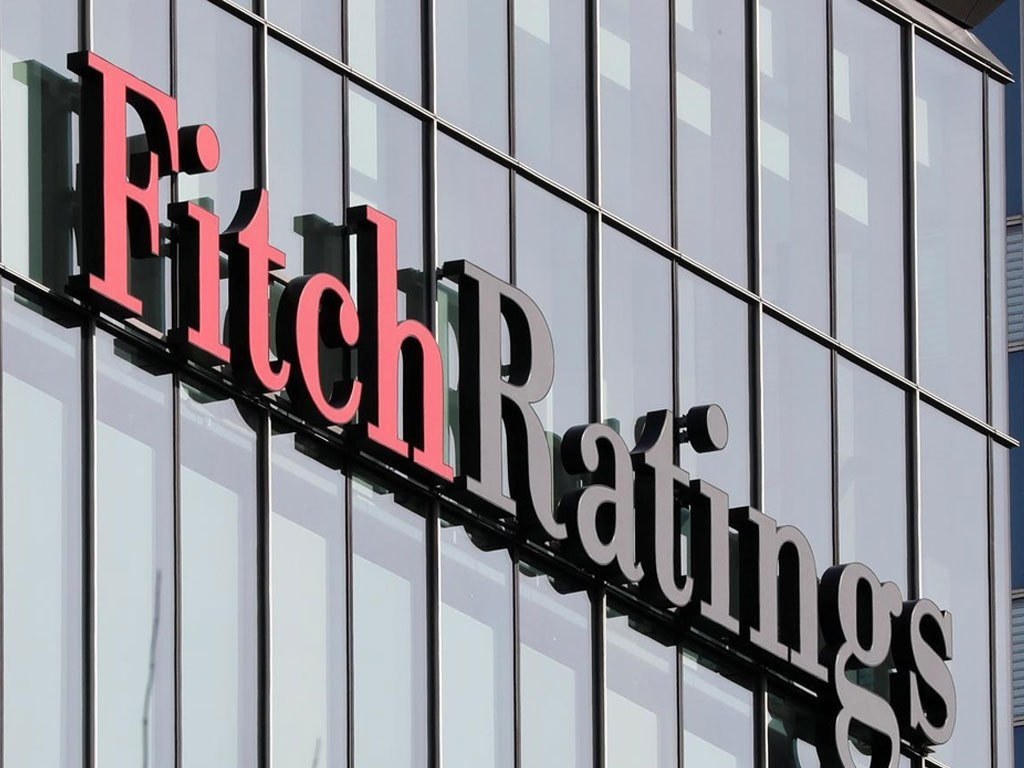By Staff Reporter
ISLAMABAD: Fitch Ratings has upgraded Pakistan’s Long-Term Foreign-Currency Issuer Default Rating (IDR) to ‘CCC+’ from ‘CCC’, citing greater certainty over continued availability of external funding.
“The upgrade reflects greater certainty over continued availability of external funding, in the context of Pakistan’s staff-level agreement (SLA) with the IMF on a new 37-month USD7 billion Extended Fund Facility (EFF),” Fitch said in a statement.
“Strong performance on the previous, more temporary IMF arrangement helped the country narrow fiscal deficits and rebuild foreign exchange (FX) reserves, and further improvements are likely.”
Fitch noted that Pakistan’s successful completion of its previous IMF program and strong performance on fiscal consolidation and rebuilding foreign exchange reserves contributed to the upgrade.
Pakistan and the IMF reached a staff-level agreement on July 12. Before IMF Board approval, which is likely by end-August, the government will have to obtain new funding assurances from bilateral partners, mainly Saudi Arabia, the UAE and China, totalling about $4 billion-$5 billion over the duration of the EFF.
Fitch said this will be achievable, given the strong past record of support and significant policy measures in the recent budget for the fiscal year ending June 2025.
Pakistan’s coalition government aims under the new EFF to tackle longstanding structural weaknesses in the country’s tax system, energy sector and state-owned enterprises, alongside a commitment to exchange rate flexibility and improvements in the monetary policy framework.
It targets a 3pp increase in tax revenues/GDP, from under 9 percent in FY24, including through higher taxes on the country’s influential agricultural sector, which will have to be legislated at the provincial level.
Pakistan successfully completed its nine-month Stand-by Arrangement with the IMF in April. Over the past year, the government raised taxes, cut spending and raised electricity, gas and petrol prices. The government also all but eliminated the gap between the interbank and parallel market exchange rates through a crackdown on the black market and regulation of exchange houses.
Fitch forecasts the current account deficit (CAD) to stay relatively contained at about $4 billion (about 1 percent of GDP) in FY25, after about $700 million in FY24, given tight financing conditions and subdued domestic demand.
“Contractionary economic and fiscal policies, lower commodity prices and rupee depreciation have driven the sharp narrowing of the CAD from over $17 billion in FY22. FX shortages have eased with the return of remittances to the official banking system, reversing their decline in 2H22.”
The rating agency said besides CADs, the authorities face over $22 billion in external public debt maturities in FY25. Of the total maturities, $13 billion is in the form bilateral deposits and loans that are regularly rolled over, including nearly $4 billion in liabilities of the State Bank of Pakistan (SBP).
Maturing debt also includes nearly $4 billion from Chinese commercial banks, and $4 billion from multilateral creditors. Pakistan’s next international bond maturity is in September 2025.
“The government says it has identified over $24 billion in gross external financing, mostly from bilateral and multilateral sources, not including potential bond issuance or the renewal of the oil facility with Saudi Arabia, but including a potential Panda bond issuance,” the rating agency added. “FDI and non-resident portfolio inflows and climate-related finance pose other upsides to the funding plan.”
Fitch said half of the revenue effort under the EFF is frontloaded in the FY25 budget, which was prepared together with IMF staff and projects a headline deficit of 5.9 percent of GDP and a 2.0 percent primary surplus. “Our forecasts assume partial implementation of this and project a primary surplus of 0.8 percent of GDP and an overall fiscal deficit of 6.9 percent of GDP in FY25, improving to 1.3 percent of GDP and 6 percent of GDP, respectively, in FY26.”
However, Fitch also highlighted the challenges ahead, stating that “Pakistan’s large funding needs leave it vulnerable if it fails to implement challenging reforms, which could undermine programme performance and funding.”
The new IMF program aims to tackle longstanding structural weaknesses in Pakistan’s tax system, energy sector, and state-owned enterprises, alongside a commitment to exchange rate flexibility and improvements in the monetary policy framework.
As Fitch noted, “The government aims under the new EFF to tackle longstanding structural weaknesses in Pakistan’s tax system, energy sector and state-owned enterprises, alongside a commitment to exchange rate flexibility and improvements in the monetary policy framework.”
The rating agency said before the recent SBA, governments from across the political spectrum in Pakistan have had a mixed record of IMF programme performance, often failing to implement or reversing the required reforms. “The current apparent consensus within Pakistan on the need for reform could weaken once economic and external conditions improve, although Pakistan now has fewer financing options than in the past.”
Copyright © 2021 Independent Pakistan | All rights reserved




